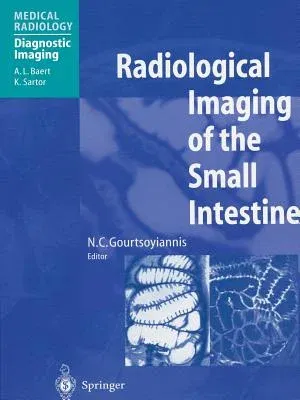Radiological Imaging of the Small Intestine (Softcover Reprint of the Original 1st 2002)Paperback - Softcover Reprint of the Original 1st 2002, 15 April 2014

Qty
1
Turbo
Ships in 2 - 3 days
In Stock
Free Delivery
Cash on Delivery
15 Days
Free Returns
Secure Checkout

Part of Series
Medical Radiology
Part of Series
Medical Radiology / Diagnostic Imaging
Part of Series
Diagnostic Imaging
Print Length
480 pages
Language
English
Publisher
Springer
Date Published
15 Apr 2014
ISBN-10
3642629938
ISBN-13
9783642629938
Description
Product Details
Book Edition:
Softcover Reprint of the Original 1st 2002
Book Format:
Paperback
Country of Origin:
NL
Date Published:
15 April 2014
Dimensions:
27.94 x
20.96 x
2.54 cm
ISBN-10:
3642629938
ISBN-13:
9783642629938
Language:
English
Location:
Berlin, Heidelberg
Pages:
480
Publisher:
Weight:
1102.23 gm